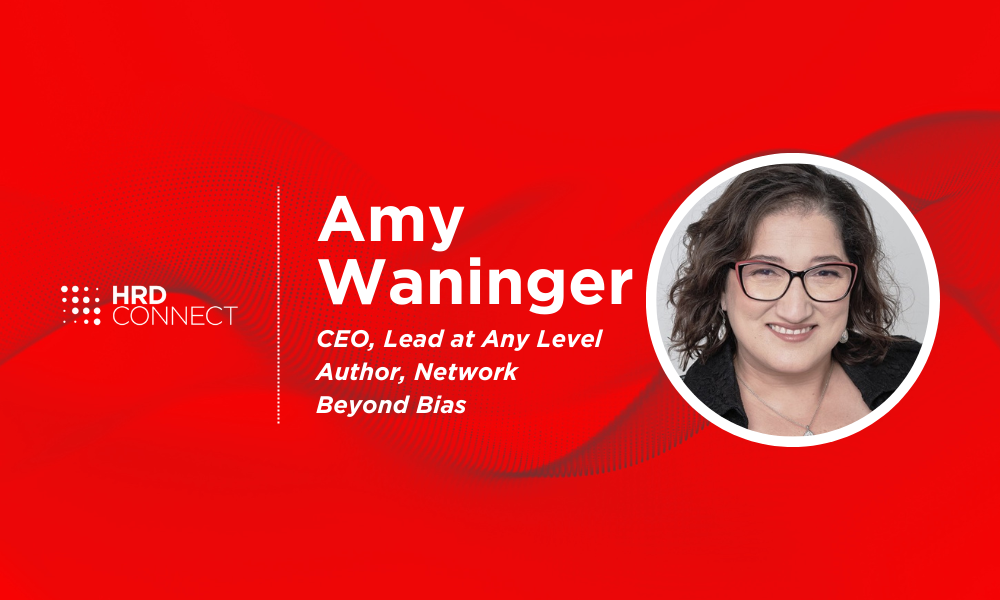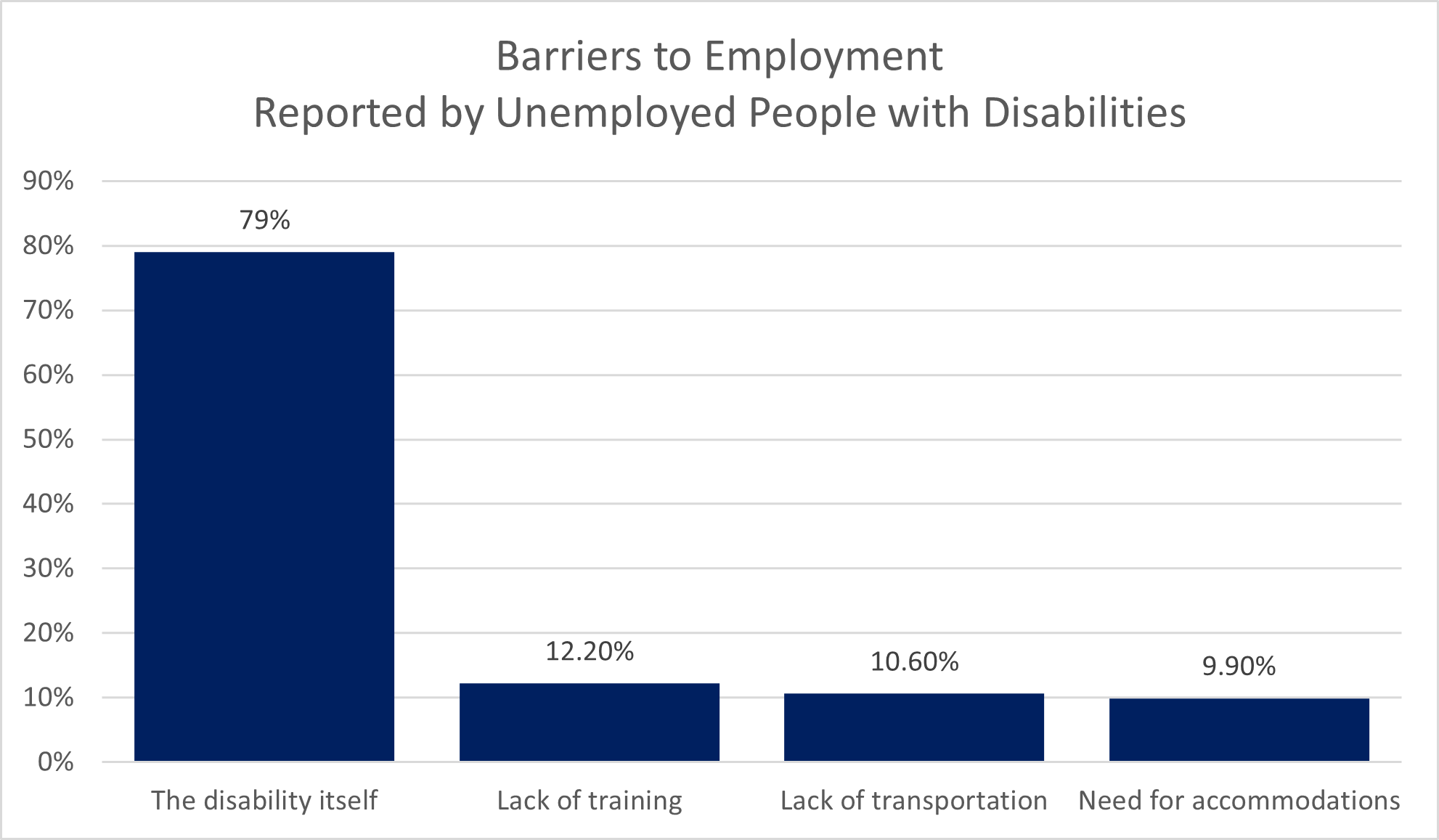The hidden talent market: Hiring people with disabilities
- 5 Min Read
Within the context of the current labor crisis, companies need to be intentional about tapping into this often-overlooked talent pool. The benefits are numerous, beyond merely filling open positions. By actively seeking out and hiring individuals with disabilities, companies can access a diverse range of skills, perspectives, and experiences that can bring innovation to their workplaces.
- Author: Amy Waninger
- Date published: Apr 18, 2023
- Categories

According to the U.S. Census Bureau, there were an estimated 41.1 million people in the United States living with a disability in 2019, just before the Covid-19 pandemic. This number is no doubt on the rise as the population ages and the long-term impacts of Covid become clear. And while many people in the existing workforce have visible or invisible disabilities, the Bureau of Labor Statistics reports that the unemployment rate of people with disabilities is about twice as high as for the non-disabled workforce.
Within the context of the current labor crisis, companies need to be intentional about tapping into this often-overlooked talent pool. The benefits are numerous, beyond merely filling open positions. By actively seeking out and hiring individuals with disabilities, companies can access a diverse range of skills, perspectives, and experiences that can bring innovation to their workplaces.
Recognizing and removing barriers to employment
In its 2022 survey, the Bureau of Labor Statistics found that nearly half (47.5 percent) of unemployed people with disabilities reported at least one barrier to employment.

Employers may need to get creative if they want to show a commitment to hiring people with disabilities. This starts with the representation of people with disabilities in marketing materials and on career sites. That includes job postings that list only required components of the role. Moreover, they should make clear statements about disability, inclusion, and accessibility on the company website.
Companies are required by the Americans with Disabilities Act (ADA) to provide reasonable accommodations to employees with disabilities. Such accommodations may include modified work schedules, assistive technology, work-from-home arrangements, or ensuring buildings are accessible for people who use wheelchairs. Employers should have processes in place for requesting accommodations and tracking their implementation. Maintaining open, honest communication with employees requesting accommodations is also critical.
While the Department of Labor has set a goal for federal contractors to reach a disability representation of 7 percent among their employee populations, the National Organization on Disability (NOD) reports that only about 13 percent of surveyed companies had met this target. Just 51% of on-campus recruiting activities and only 42% of internships target students with disabilities. Employers should actively recruit people with disabilities by posting open positions on advocacy group job boards and partnering with vocational rehabilitation agencies. Companies also need to audit their own application and hiring processes for accessibility.
The danger of misconceptions
Perhaps one of the biggest barriers to hiring people with disabilities, though, involves the misconceptions and stereotypes that exist around disability. Hiring managers may assume that people with disabilities won’t be able to perform job-related tasks. That accommodations will be too costly or difficult to implement. That the managers themselves will be taking on additional risk or responsibility by hiring a worker with a disability. It’s important for hiring managers and members of candidate selection teams to focus on matching skills with job responsibilities. They cannot just focus on a candidate’s perceived limitations or how they will get the job done.
Creating a more inclusive workplace for people with disabilities
Companies need to do more to assess, track, and improve their retention of employees with disabilities. They must meet the training and upskilling needs of these employees, and the companies’ own responses to requests for accommodations. Executive sponsorship is common (98 percent, according to NOD) for other diversity initiatives, from Employee Resource Groups to cultural heritage celebrations, but less consistent (just 76 percent) around advocacy for disability inclusion and accessibility.
There’s also work to be done around educating able-bodied employees about the obstacles, discrimination, and microaggressions their disabled colleagues face. Requiring disability awareness training for all employees is a good place to start. Executives should ensure that policies and procedures are easily accessible to all employees. Managers can step up by navigating difficult conversations alongside or on behalf of their employees with disabilities, depending on the needs of the employee. And all employees can step up as advocates and allies for their coworkers with disabilities by educating themselves and speaking out against bad behavior in the workplace.
The benefits of hiring people with disabilities
One of the biggest advantages of hiring people with disabilities is the unique perspective they bring to the workplace. Individuals with disabilities often have had to navigate challenges and overcome obstacles that their able-bodied peers have not. Employers may find these workers bring exceptional creativity, problem-solving skills, and resilience to the workplace.
Employers may also find that workers with disabilities are highly motivated and loyal. This can improve employee retention rates and increase productivity. In the current labor shortage, any investment that improves employee retention can realize a hefty return.
Companies that attract and retain employees with disabilities may find new markets for existing products and services—or create new solutions to unmet needs in the marketplace. Many times, the innovations that improve the quality of life for people with disabilities also benefit the general population.
The promise of a more inclusive future
Hiring people with disabilities is not charity work. Companies can benefit from the unique perspectives that come from this often-overlooked labor pool. To gain these advantages, though, employers need to do the hard work of attracting, including, and retaining employees with disabilities. Doing so will unlock new possibilities and make the workplace more inclusive for everyone.
________________
Amy C. Waninger is the Founder & CEO of Lead at Any Level, where she improves employee engagement and retention for companies that promote from within. Amy offers assessments, advisory services, and training on essential skills for inclusive leaders. She is the author of seven books including Network Beyond Bias: Making Diversity a Competitive Advantage for Your Career. Amy is a Certified Diversity Professional.










